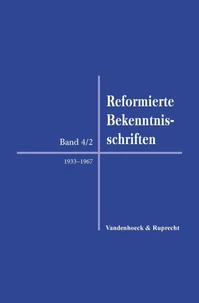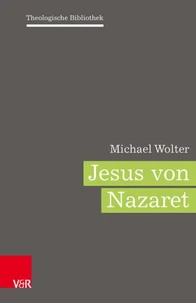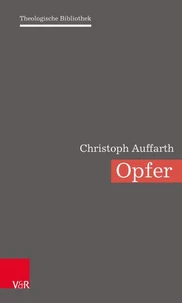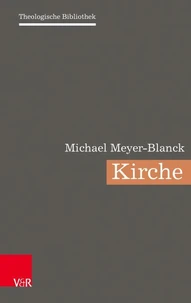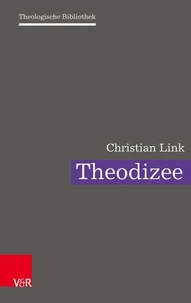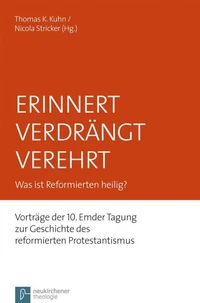Europe as the Other. External Perspectives on European Christianity
Par : , ,Formats :
Disponible dans votre compte client Decitre ou Furet du Nord dès validation de votre commande. Le format PDF est :
- Compatible avec une lecture sur My Vivlio (smartphone, tablette, ordinateur)
- Compatible avec une lecture sur liseuses Vivlio
- Pour les liseuses autres que Vivlio, vous devez utiliser le logiciel Adobe Digital Edition. Non compatible avec la lecture sur les liseuses Kindle, Remarkable et Sony
 , qui est-ce ?
, qui est-ce ?Notre partenaire de plateforme de lecture numérique où vous retrouverez l'ensemble de vos ebooks gratuitement
Pour en savoir plus sur nos ebooks, consultez notre aide en ligne ici
- Nombre de pages277
- FormatPDF
- ISBN978-3-647-10131-6
- EAN9783647101316
- Date de parution11/12/2013
- Protection num.pas de protection
- Taille7 Mo
- Infos supplémentairespdf
- ÉditeurVandenhoeck & Ruprecht
Résumé
There has been much academic debate over recent years on Europe defining itself over against the »Other.« This volume asks from the opposite perspective: What views did non-Europeans hold of »European Christianity« ? In this way, the volume turns the agency of definition over to non-Europeans. Over the last centuries, the contacts between Europeans and non-Europeans have been diverse and complex. Non-Europeans encountered Europeans as colonialists, traders, missionaries and travellers.
Most of those Europeans were Christians or were perceived as Christians. Therefore, in terms of religion Europe was often identified with Christianity. Europeans thus also conveyed a certain image of Christianity to non-European countries. At the same time, non-Europeans increasingly travelled to Europe and experienced a kind of Christianity that often did not conform to the picture they had formed earlier.
Their descriptions of European Christianity ranged from sympathetic acceptance to harsh criticism. The contributions in this volume reveal the breadth of these opinions. They also show that there is no clear line of division between »insiders« and »outsiders« , but that Europeans could sometimes perceive themselves as being »outsiders« in their own culture while non-Europeans could adopt »insider« perspectives.
Furthermore, from these encounters new religious and cultural expressions could emerge.
Most of those Europeans were Christians or were perceived as Christians. Therefore, in terms of religion Europe was often identified with Christianity. Europeans thus also conveyed a certain image of Christianity to non-European countries. At the same time, non-Europeans increasingly travelled to Europe and experienced a kind of Christianity that often did not conform to the picture they had formed earlier.
Their descriptions of European Christianity ranged from sympathetic acceptance to harsh criticism. The contributions in this volume reveal the breadth of these opinions. They also show that there is no clear line of division between »insiders« and »outsiders« , but that Europeans could sometimes perceive themselves as being »outsiders« in their own culture while non-Europeans could adopt »insider« perspectives.
Furthermore, from these encounters new religious and cultural expressions could emerge.
There has been much academic debate over recent years on Europe defining itself over against the »Other.« This volume asks from the opposite perspective: What views did non-Europeans hold of »European Christianity« ? In this way, the volume turns the agency of definition over to non-Europeans. Over the last centuries, the contacts between Europeans and non-Europeans have been diverse and complex. Non-Europeans encountered Europeans as colonialists, traders, missionaries and travellers.
Most of those Europeans were Christians or were perceived as Christians. Therefore, in terms of religion Europe was often identified with Christianity. Europeans thus also conveyed a certain image of Christianity to non-European countries. At the same time, non-Europeans increasingly travelled to Europe and experienced a kind of Christianity that often did not conform to the picture they had formed earlier.
Their descriptions of European Christianity ranged from sympathetic acceptance to harsh criticism. The contributions in this volume reveal the breadth of these opinions. They also show that there is no clear line of division between »insiders« and »outsiders« , but that Europeans could sometimes perceive themselves as being »outsiders« in their own culture while non-Europeans could adopt »insider« perspectives.
Furthermore, from these encounters new religious and cultural expressions could emerge.
Most of those Europeans were Christians or were perceived as Christians. Therefore, in terms of religion Europe was often identified with Christianity. Europeans thus also conveyed a certain image of Christianity to non-European countries. At the same time, non-Europeans increasingly travelled to Europe and experienced a kind of Christianity that often did not conform to the picture they had formed earlier.
Their descriptions of European Christianity ranged from sympathetic acceptance to harsh criticism. The contributions in this volume reveal the breadth of these opinions. They also show that there is no clear line of division between »insiders« and »outsiders« , but that Europeans could sometimes perceive themselves as being »outsiders« in their own culture while non-Europeans could adopt »insider« perspectives.
Furthermore, from these encounters new religious and cultural expressions could emerge.


